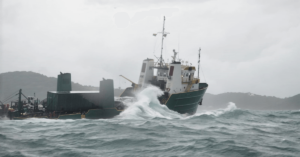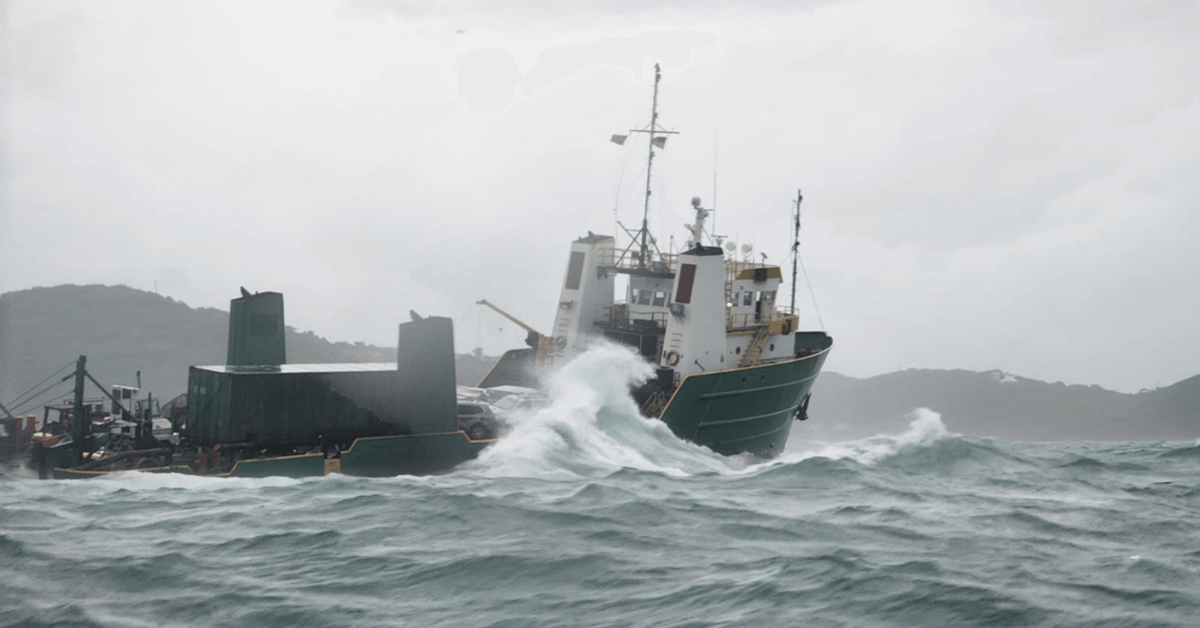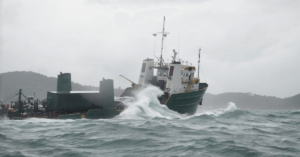
Russia Assures India Of Uninterrupted Oil Supply Despite U.S. Sanctions
February 12, 2025
New Report Warns Of Critical Weakness At U.S. Ports, Leaving Them Vulnerable To Cyber Attacks
February 12, 2025

A cargo vessel ran aground in the Caribbean Sea after its anchor chain failed, causing it to drift uncontrollably, the National Transportation Safety Board (NTSB) reported in its latest findings.
The incident took place on October 4, 2023, when the Bonnie G was anchored about a mile south of St. Thomas, U.S. Virgin Islands, waiting for bad weather to clear.
As the vessel began drifting toward shore, the captain attempted to steer it away from land, but it ran aground. The 12 crew members on board the abandoned ship were safely rescued by the U.S. Coast Guard.
The vessel remained stuck for weeks before salvage teams refloated it and towed it to shore. No pollution or injuries were reported, but the ship was declared a total constructive loss, valued at $1.5 million.
Investigators found that the captain made errors in anchoring, which was a major cause of the grounding. Before leaving St. Croix, the weather forecast indicated winds between 10-15 knots, with gusts up to 25 knots expected after midnight.
The crew planned to reach St. Thomas before then. However, upon arrival at Crown Bay, the actual wind conditions were worse than forecast.
The situation was further made difficult when a loaded barge broken free from its moorings was partially blocking Bonnie G’s intended docking area. Unable to dock, the captain decided to anchor and wait for conditions to improve.
When positioning the vessel, the captain estimated the water depth to be 23-26 feet and deployed 135 feet of anchor chain. However, the actual water depth was 68 feet, meaning the vessel required many more chains to anchor securely.
According to NTSB, best anchoring practices recommend a chain length of at least five to seven times the water depth, with even more needed in rough conditions.
The Bonnie G should have deployed 2.5 to 3.5 times more chains than it did. The insufficient chain length likely caused the anchor to drag and eventually led to the chain breaking.
Once the anchor chain failed, the vessel began drifting toward land. While trying to regain control, the captain manoeuvred the ship but unknowingly steered it directly onto a submerged rock.
This breached the hull just ahead of the engine room, after which the vessel was flooded with seawater.
Investigators also found that a watertight door in the engine room was left open and unsecured when the crew abandoned the ship. Had it been closed as required, flooding could have been contained, and the damage could have been limited.
The NTSB concluded that the main causes of the grounding were the insufficient anchor chain length, which led to its failure, and the captain’s failure to identify the nearby rock on navigational charts.
Therefore, mariners need to review navigational charts and other sources of local information like the U.S. Coast Pilot, especially in such weather conditions when the risk of drifting is high, and the crew may need to take quick action.
Reference: NTSB
Source: Maritime Shipping News


